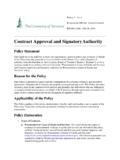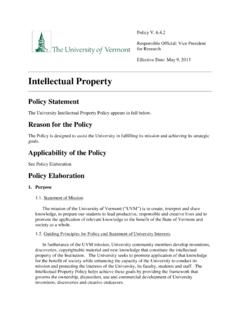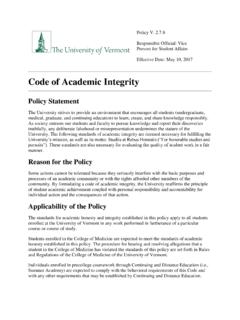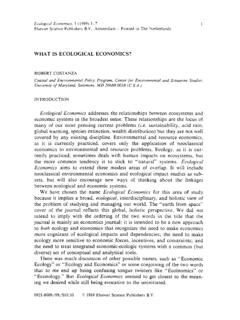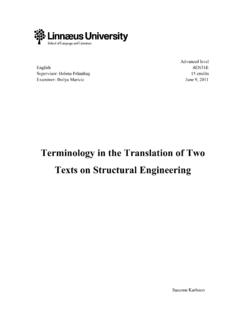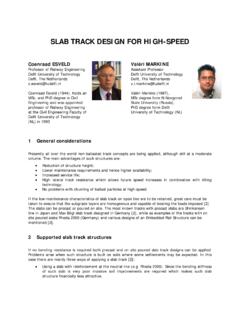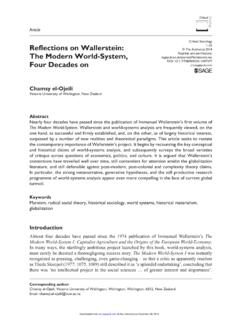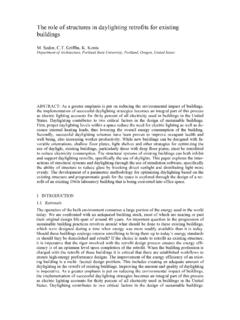Transcription of artim Engineering and Disaster Preparedness for Heritage ...
1 1 Engineering AND Disaster Preparedness FOR Heritage STRUCTURES Nick artim Heritage Protection Group PO Box 895 Middlebury, VT 05753 802-388-1064 As defined by Miriam Webster an Emergency is An unforeseen combination of circumstances or the resulting state that calls for immediate action. (1). The same source defines a Disaster as A sudden calamitous event bringing great damage, loss, or destruction; broadly: a sudden great misfortune or failure. (2) During a building s lifetime it will be exposed to many types of emergencies. Most are relatively minor incidents such as a broken pipe, fallen tree limb, or act of vandalism that damages a portion of the building but does not result in permanent or complete loss. However while generally less frequent, emergencies may be severe such as an earthquake, hurricane or tornado that completely destroys the structure .
2 A Disaster is the result of an emergency that is not properly controlled because the designer did not anticipate the emergency event or they did not have adequate design 2knowledge for the building to survive the event. History is filled with examples of emergencies that became disasters including hurricanes, tornados, floods, fires, and earthquakes. For historic buildings preventing emergencies from becoming disasters is an important part of preservation. Unfortunately emergency Preparedness and Disaster prevention are often overlooked by preservationists. One common type of building emergency that may or may not become a Disaster is a fire which usually starts as a relatively minor incident such as an overheating electrical cable. If the emergency is detected and suppressed, progress of the event is interrupted; however if it is allowed to progress to an uncontrolled blaze the building may be completely destroyed, which is the Disaster .
3 The fire may also spread to involve other buildings creating a larger Disaster as was demonstrated by the Great Chicago Fire of 1871. In some instances one type of emergency can lead to wide spread Disaster such as was demonstrated in the 1989 San Francisco earthquake in which natural gas pipes ruptured and a number of fires broke out from the leaking gas. The Midwest floods of 2008 started off as emergencies from snowmelt and rainwater but quickly elevated to a Disaster as levees failed and entire swaths of cities and towns were suddenly inundated. The session on Engineering and Disaster Preparedness for Heritage Structures should define the impact of disasters on humankind s built environment and the role that the Engineering community can play to reduce the impact of disasters in historic structures. The session should evaluate how engineers are trained for this work and specifically how 3a preservation Engineering curriculum can fulfill needs that are not currently served.
4 The document is intended to be a basis for the discussion and does not attempt to answer questions, which will be an objective of the emergency/ Disaster discussion group. A large portion of preservation Engineering discussions focus on structural and seismic issues which is understandable since framing and other structural elements can fatigue and fail over time and are frequent causes of historic building damage. The structural engineer who identifies flaws in an existing building s construction and develops solutions that will maintain building integrity during an earthquake is practicing preservation Engineering . Likewise the engineer who realizes that the roof structure on a historic building has been weakened from repeated exposure to category 4 or 5 hurricanes, and presents solutions to withstand future storms is also practicing preservation Engineering .
5 In building design there are several Engineering disciplines, in addition to structural, that are a part of the building design process. They include designers of climate management systems (heating, ventilation and air conditioning), electrical and communications systems, and safety and security features. The first objective of the Engineering process is to design systems for specific functions but this also includes evaluating potential emergencies caused by the systems and prevention of catastrophe. Electrical engineers are trained to design power systems that safely provide adequate electrical capacity for the building s use and occupancy. In older historic buildings the 4cables and circuits are often antiquated and may overheat and fail, resulting in a fire. Is the electrical engineer who recognizes defective electrical circuitry in a historic building and identifies improvements that allow safe electrical use in the building practicing preservation Engineering ?
6 Historic buildings often have heating systems that are inefficient and have exceeded their original design life. They may now create building safety hazards including carbon monoxide poisoning and fires. A mechanical engineer can evaluate a system to identify deficiencies and develop solutions that produce a desired comfort level and maintain safety. They can also recognize poor air movement to reduce or eliminate mold or rotting conditions, and design duct systems to control these conditions. Is the mechanical engineer who designs new and safe heating and air conditioning systems for a historic building practicing preservation Engineering ? Many historic buildings are / have been lost to fire. A fire protection engineer is trained to evaluate fire hazards and develop methods to reduce the risk of fire. They can also design fire resistance, and fire detection and suppression systems to reduce fire severity.
7 Is the fire protection engineer who identifies risk and designs appropriate protection systems for the building practicing preservation Engineering ? One of the roles of the civil engineer is to control water movement and reduce erosion through ground realignment and drainage. Is the civil engineer who recognizes that a historic district is threatened by storm flooding and designs a series of water diversion 5measures to reduce the threat practicing preservation Engineering ? Security engineers evaluate the risk of vandalism, theft, terrorism and other criminal activities. They design features that can make it more difficult for an intruder to access a building, or will increase the chance that the intruder will be apprehended if they enter. Is the security engineer who works with a historic building to reduce the possibility of unauthorized entry and vandalism practicing preservation Engineering ?
8 This leads to a fundamental question. Is the preservation engineer a unique specialist engineer who is solely responsible for overseeing all aspects of Engineering as it relates to the historic structure ? If so, how do they obtain the wide array of knowledge that the various Engineering disciplines (electrical, mechanical, fire protection, civil, security) possess to achieve the satisfactory performance objectives of each discipline? Alternatively is the electrical, mechanical, fire protection, civil or security engineer who works with historic structures a preservation engineer? Depending on the specific type of building and required expertise the answer may be either, leading to a specialist degree in preservation Engineering or a preservation Engineering certification for practicing engineers One item to note is that to insure building safety many jurisdictions require building design work to be accomplished by a licensed professional engineer (PE).
9 Licensure which is regulated by state boards exists for electrical, structural, mechanical, civil, and fire protection engineers. However at present time there is not a licensing arrangement 6for a preservation engineer and therefore to comply with requirements a preservation engineer who designs a system must be licensed in the specific discipline or work in tandem with a licensed engineer. Engineers use modern codes and standards as their basis of design. These documents usually result after the causes of prominent disasters have been determined and solutions are identified to prevent similar events in the future. Codes and standards and the use of materials that have been validated by an independent testing agency such as Underwriter s Laboratories (UL) or Factory Mutual (FM) become relatively easy to apply in new building construction.
10 This provides the engineer with confidence that the system , component or feature will result in a safe design. The greater difficulty is to prove that traditional materials, techniques, or systems installed before the advent of modern testing standards can offer an equivalent level of safety. Without knowledge of expected performance, engineers will frequently follow the conservative known approach and design systems which may conflict with historic preservation objectives. In turn this leads to systems that may not be fully appropriate for the building and disagreements with the preservation community. Therefore topics that need to be discussed in this colloquium include: 1. What process is appropriate for Engineering safety into historic buildings? 2. How should the preservation engineer be trained to implement the process 3.

